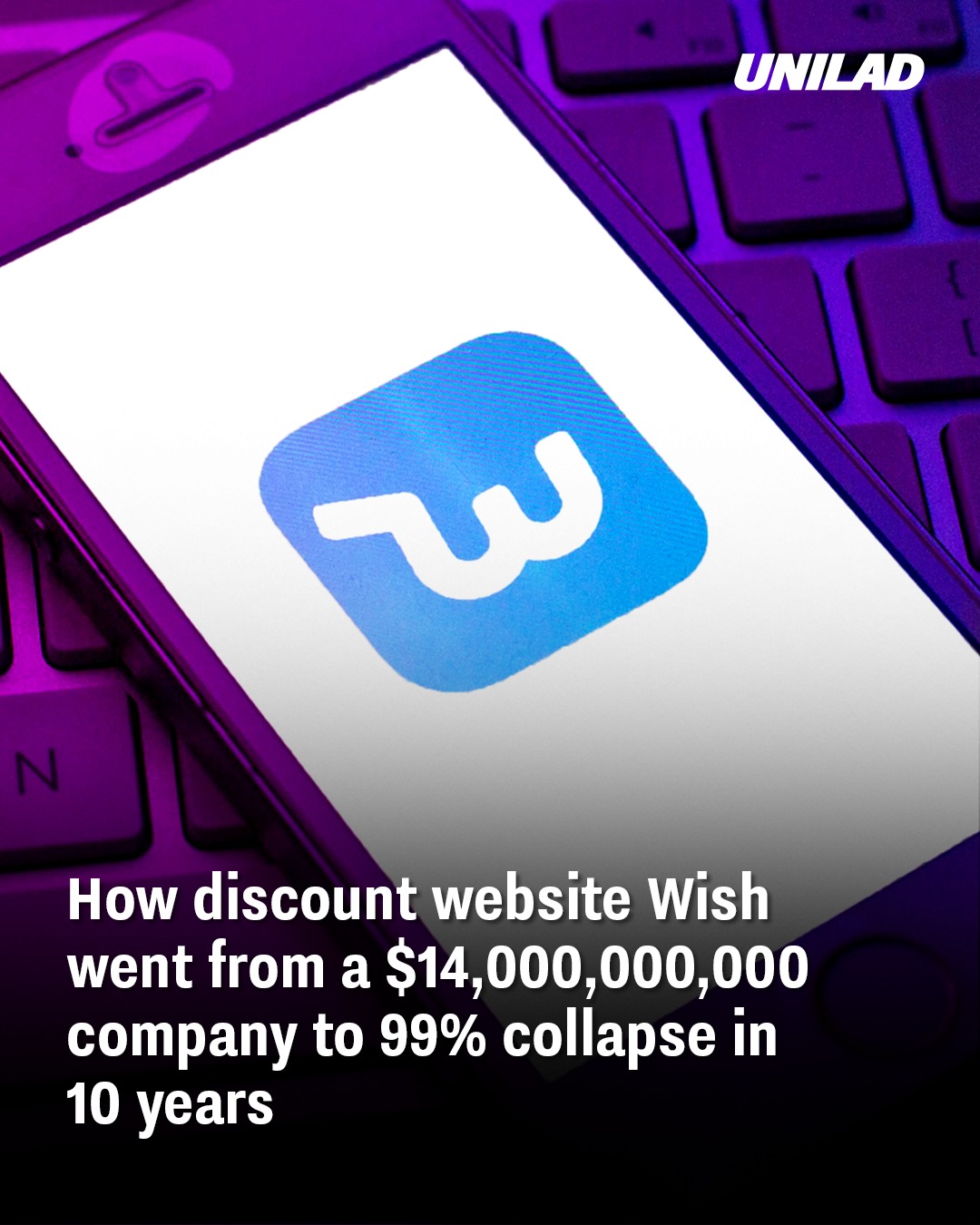Wish, once hailed as the future of online shopping, experienced a meteoric rise and a devastating collapse, all within a decade. Founded by former Google engineer Peter Szulczewski, the company initially seemed poised to redefine the way people shop online. But despite early success, the app eventually suffered a near-total collapse, leaving many wondering how such a promising venture could go from a $14 billion company to a shadow of its former self.
Wish’s Early Success: A Viral Shopping App
When Wish launched, it took the online shopping world by storm. By 2015, the app had become the most downloaded shopping app globally, attracting 400 million users. It offered a unique shopping experience, leveraging algorithms to predict products customers might want before they even searched for them. Investors took notice, and offers of $10 billion from Amazon and Alibaba were put on the table. Szulczewski, however, famously rejected these offers, stating, “We’ll be bigger than Walmart.”
At its peak, Wish was valued at $14 billion, and it seemed to be on a path to revolutionize online shopping. The app’s focus was on impulse buying—selling inexpensive products like $1 earbuds, $2 dresses, and $5 gadgets. For many users, the allure of finding cheap items with a click of a button was irresistible.
The Cracks Begin to Show
Despite its initial success, problems were bubbling beneath the surface. The very model that made Wish successful—offering cheap impulse buys—was also its undoing. The app became flooded with counterfeit sellers, and consumers started noticing long delivery times and unreliable refund processes. Internally, Wish’s management seemed to think these problems could be “fixed later,” but unfortunately for the company, that time never came.
As Wish continued to expand, its business model began to show significant flaws. The app’s focus on cheap, low-quality products led to customer dissatisfaction. Instead of shopping for what they actually needed, many users were making impulse purchases that ended in disappointment.

Wish.com being visited on a laptop (Getty Images)
A Fragile Business Model: Ads and Over-Spending
By 2020, Wish had burned through cash at an alarming rate. The company spent a staggering $1.7 billion on digital ads alone that year, yet its financials told a different story. With $2.5 billion in revenue, Wish lost $745 million, highlighting how unsustainable its business model had become. The company relied heavily on digital advertising, but when COVID-19 caused a surge in digital ad prices, Wish’s only growth engine collapsed.
This led to a significant drop in revenue, falling from $2.5 billion to a mere $500 million, and monthly users plummeted from 100 million to just 11 million. Wish was no longer the viral sensation it once was, and its reputation among consumers suffered immensely.

A Blackberry Curve smartphone (Getty Images)
Consumer Discontent: A Reputation Destroyed
Wish’s downfall didn’t go unnoticed by its users. On Reddit, users began to use the term “Wish-dot-com version” as a pejorative, meaning “the cheapest, worst possible version” of a product. A former user summed it up: “Yeah, once ‘wish-dot-com version’ became slang for ‘s*******t possible version’ it was pretty much the end for them.” This shift in consumer perception was a major blow to Wish’s brand.
Another user added, “They had zero control or oversight on their sellers. The site very quickly turned into scam central with no way to get buyer protection.” This growing reputation for being a scam-filled marketplace made it even harder for Wish to recover.
Attempts to revitalize the brand with a new logo and increased prices only backfired. Rather than fixing the core issues, Wish’s leadership tried to mask the problems with superficial changes. One Reddit user responded to the price hikes: “So it was the same crap as before, but instead of most items being crazy cheap, they were about the same price as Amazon, but lower quality and with like 3-week shipping.”
Enter Temu: The Final Nail in the Coffin
In 2022, Temu, a new e-commerce platform, entered the market. With faster shipping times and a more polished design, Temu quickly attracted users who were tired of the subpar experience on Wish. As Temu gained traction, Wish’s downward spiral continued.
In 2022, Peter Szulczewski stepped down as CEO, and by 2024, the company had sold for a mere $173 million—a staggering 99% drop from its peak valuation. It was a brutal reminder of how even the most successful startups can collapse when they fail to adapt to changing market conditions.
A Familiar Tale: Wish’s Story Mirrors Other Tech Failures
Wish’s story isn’t unique in the world of tech. Similar to the rise and fall of companies like BlackBerry, which was once worth $85 billion and dominated the smartphone market before failing to adapt to the iPhone, Wish’s rapid growth and refusal to address core issues led to its demise. BlackBerry’s executives dismissed the iPhone as a fad, and Wish’s leadership ignored the growing dissatisfaction among its users.
Both companies experienced rapid growth, but their inability to evolve with the times ultimately led to their downfall. Wish’s failure to address quality control and customer satisfaction issues mirrors BlackBerry’s failure to innovate, making their stories eerily similar.
Conclusion: The Importance of Adaptation in Tech
The fall of Wish serves as a cautionary tale for other tech companies. Rapid growth and viral success are not always sustainable if the company doesn’t address fundamental issues. Wish’s focus on impulse buys and cheap products led to its collapse when consumers began to demand higher-quality experiences. The company’s inability to adapt to market changes, coupled with a lack of oversight on its sellers, ultimately led to its downfall.
The rise and fall of Wish highlight the importance of innovation, quality control, and customer satisfaction in the tech industry. Companies that fail to address these core aspects may find themselves in the same position as Wish—watching their once-promising business model unravel.
Full Story: Man Loses 360 Pounds Naturally: Internet Rallies to Support His Next Step
Full Story: Tammy Hembrow’s Bikini Photos Are Stirring Controversy: Here’s Why Everyone’s Talking



